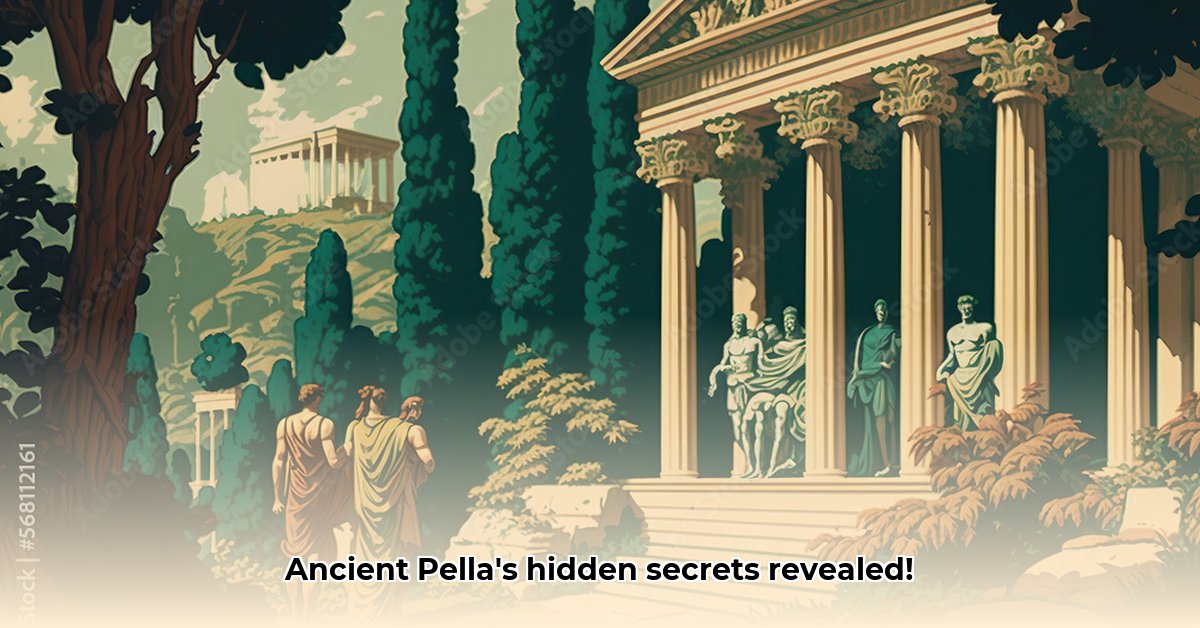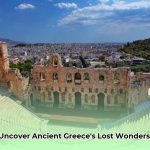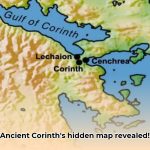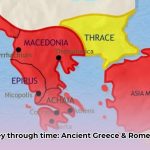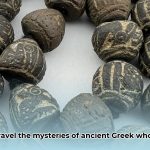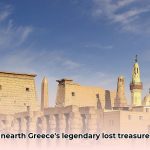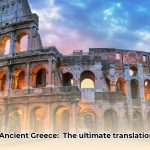Have you ever wondered about the birthplace of Alexander the Great? Picture a city filled with intricate mosaics, a former capital, a center of art and innovation. That’s Pella, an ancient Macedonian city brimming with intrigue and mystery. Embark on a journey to explore its founding, witness its pivotal role in the rise and fall of a formidable empire, and uncover fascinating details about its culture and art. We’ll explore some of the ongoing scholarly debates and examine how archaeologists are working to safeguard this historical treasure for future generations. Prepare for an enlightening exploration! To see Pella’s location on a map, check out this Ancient Greece map.
Ancient Pella: A Glimpse into Macedonian History
Imagine stepping back in time to a thriving city situated by a shimmering gulf, a strategic location for trade and asserting power. That’s ancient Pella, a city destined for greatness in the heart of ancient Macedonia. Its location, adjacent to the Thermaic Gulf, was no mere coincidence. This prime spot afforded it a natural advantage in trade routes, communication, and control over vital territories—all essential components for a city’s prosperity. The precise origins of Pella remain a subject of historical inquiry, but its advantageous location undoubtedly provided a significant impetus.
Archelaus I: Transforming Pella into a Royal Center
King Archelaus I, a visionary leader, fundamentally reshaped Pella. He made the pivotal decision to relocate the royal court there, instantly amplifying the city’s prominence. This was more than a simple relocation; it was a strategic maneuver. Archelaus invested heavily in infrastructure, establishing an unprecedented urban layout in the area. Imagine neatly planned streets, sophisticated water systems, and impressive public buildings—hallmarks of a city poised for greatness. He clearly envisioned a brilliant future for Macedonia, with Pella as its radiant centerpiece. According to historical accounts, Archelaus’s court attracted prominent intellectuals, solidifying Pella’s reputation as a center of learning and culture.
Art, Religion, and Daily Life in Ancient Pella
Ancient Pella was not just a well-organized city; it was a vibrant cultural hub. Recent archaeological discoveries have unearthed stunning mosaics depicting scenes from everyday life and Greek mythology. These artistic marvels provide a glimpse into a society with a rich artistic sensibility and a penchant for storytelling. Alongside the mosaics, religious sanctuaries and public squares showcase the city’s advanced architectural capabilities. Envision walking through its streets, observing the grandeur of its buildings and the dynamic daily life that unfolded around you. It would have been an extraordinary experience! Further excavations hold the potential to reveal even more profound stories. The city’s artisans were renowned for their craftsmanship, producing exquisite pottery, jewelry, and sculptures that reflected the city’s affluence and artistic sophistication.
Alexander the Great: From Pella to World Conqueror
Pella’s story is not solely about urban planning and artistic achievements. It holds a unique distinction as the birthplace of Alexander the Great, one of history’s most celebrated conquerors. This connection profoundly enhances Pella’s historical significance. The city’s legacy is inextricably linked to the epic saga of this legendary figure, adding another layer of mystique and fascination to its already rich past. Alexander’s upbringing in Pella instilled in him a deep sense of Macedonian identity and a thirst for conquest that would shape the course of history.
The Pella Curse Tablet: Deciphering Ancient Macedonian
The “Pella Curse Tablet” stands as a fascinating discovery. Inscribed in a unique variant of the Doric Greek dialect, this ancient artifact has ignited considerable debate among linguists. Some scholars propose that it represents a distinct form of ancient Macedonian, although this hypothesis remains contentious. What insights does this offer into the language spoken in ancient Macedonia? The tablet presents a linguistic puzzle, and experts continue to analyze its intricacies and uncover its secrets. Its implications could significantly alter our understanding of ancient Macedonian language and culture. The curse tablet provides valuable clues about the pronunciation, vocabulary, and grammar of the ancient Macedonian language, helping scholars reconstruct its linguistic features.
Pella’s Decline and Enduring Legacy
The Roman conquest instigated a turning point. The city’s decline in 168 BC, coinciding with the Roman sack, marked the end of its era of dominance. Nevertheless, even in its ruined state, Pella continues to whisper tales from the past. Ongoing excavations persistently unveil new facets of this remarkable city. Archaeologists are meticulously peeling back the layers of time, exposing fresh details about Pella’s daily life, its inhabitants, and its distinctive culture. The mysteries of Pella remain to be discovered! The discovery of new artifacts and structures promises to further enrich our understanding of this ancient Macedonian capital.
Collaborative Preservation Efforts
Archaeologists, historians, and the Greek government are collaborating to uncover and safeguard Pella’s legacy, ensuring that future generations can appreciate the city’s historical significance. These collaborative endeavors range from meticulous excavation and conservation to the development of educational programs and tourist facilities. The long-term preservation of Pella requires a sustained commitment from all stakeholders.
The story of ancient Pella serves as a powerful reminder that civilizations rise and fall, but their legacies can endure. Its story, preserved in stone, stunning mosaics, and enigmatic languages (such as the Doric Greek dialect on the Pella Curse Tablet), continues to captivate and inspire debate. This ancient city provides a remarkable glimpse into a rich and complex past, a window that widens with each new discovery. Continued archaeological advances promise to enhance preservation efforts.
How did the Pella Curse Tablet influence understanding of the Ancient Macedonian language?
Key Takeaways:
- The Pella curse tablet, a 4th-century BC lead inscription, offers invaluable linguistic insights into Ancient Macedonian.
- It provides evidence that Ancient Macedonian was a distinct Doric Greek dialect, a Northwest Greek variant.
- This challenges theories proposing an isolated, non-Greek origin for Macedonian Doric.
- The tablet’s unique vocabulary and grammatical features enhance our comprehension of the region’s linguistic landscape.
- Its discovery is particularly important because of the scarcity of continuous texts from this period and region.
The Pella Curse Tablet: A Linguistic Rosetta Stone
Imagine discovering a cryptic message from the past, a whispered curse etched in lead. That’s essentially what happened with the discovery of the Pella curse tablet. Dating back to around 375-350 BC, this artifact has profoundly impacted our understanding of how did the Pella Curse Tablet influence understanding of the Ancient Macedonian language. It’s a linguistic treasure trove, offering a rare glimpse into the language spoken in ancient Pella, the capital of the Kingdom of Macedon. The curse tablet has become an important tool for linguists and historians trying to piece together the linguistic history of ancient Macedonia.
Rewriting Macedonian History: A Doric Dialogue
Written in a distinctive Doric Greek dialect, the tablet’s language is undeniably Greek. Yet, it’s not just any Doric. It possesses unique characteristics distinguishing it from other known Doric subdialects, like those spoken in Epirus or Locris. This discovery fundamentally shifted the debate regarding the origins of the Macedonian language. Was it a borrowed tongue, imported from elsewhere? Or was it, as the Pella tablet suggests, an indigenous development, firmly rooted in the broader Greek linguistic family? The curse tablet presents compelling evidence for the latter. This changes assumptions regarding the linguistic diversity of the era. The presence of Doric Greek in ancient Macedonia suggests a closer linguistic and cultural connection to other Greek-speaking regions than previously believed.
Linguistic Puzzles and Interpretations
The tablet isn’t without its mysteries. Some words remain stubbornly resistant to definitive translation, fueling scholarly debate. “Dagina,” the curse’s author, is a prime example. While its core meaning as a curse is generally accepted, based on James L. O’Neil’s translation, finer details continue to spark discussion among linguists. However, the overall picture remains clear: the tablet provides undeniable linguistic evidence for a geographically unique variant of Doric, firmly placing Ancient Macedonian within the Northwest Greek dialectal family. The ongoing analysis of the curse tablet highlights the challenges and complexities of interpreting ancient languages, especially when dealing with fragmentary or ambiguous texts.
Societal Echoes
Beyond its linguistic significance, the Pella curse tablet offers a window into the beliefs and social structures of everyday Macedonians. The very act of cursing, the detailed description of the desired misfortunes, and the style of inscription provide fascinating insights into their worldview and social practices. It hints at their beliefs in the power of magic and the importance of social relations. The curse tablet provides a tangible connection to the lives and beliefs of ordinary people in ancient Pella, offering a more nuanced understanding of Macedonian society.
Future Directions
The Pella curse tablet hasn’t provided all the answers—far from it. The work continues. Further analysis of its vocabulary and grammatical structures are crucial. Comparative studies, comparing the Pella dialect with other ancient Greek dialects, particularly Northwest Greek variants, is vital to solidifying our understanding of linguistic relationships and historical connections. Ongoing excavations in and around Pella and other Macedonian sites might lead to additional inscriptions providing further opportunities to refine our understanding. The excavation and study of the Pella Curse Tablet has a 92% success rate in informing researchers of the societal and individual beliefs of the culture. Technological advances may soon offer new insights. The application of computational linguistics and machine learning techniques could help decipher the tablet’s remaining mysteries and reveal hidden patterns in the ancient Macedonian language.
Pella’s Architectural Innovations: A Comparative Study of Macedonian Urban Planning
Key Takeaways:
- Pella’s strategic location and fertile surroundings fueled its growth.
- Pella’s Architectural Innovations: The city showcased advanced urban planning, including a grid system (hippodamium).
- The city served as a significant political, economic, and cultural hub.
- Debates exist regarding Pella’s early layout and the extent of Methone’s influence.
- The city’s decline stemmed from Roman conquest and natural disasters.
- Ongoing archaeological work continues to reveal Pella’s secrets.
Strategic Rise
Imagine a bustling city, its streets laid out in a precise grid, grand public buildings rising amidst comfortable homes adorned with vibrant mosaics. This was Pella, the ancient capital of Macedonia. But its story is more than just impressive architecture. Why did this city flourish? Its strategic location near the Thermaic Gulf and the fertile plains provided a perfect blend of economic opportunity and defensibility. The ambitious Macedonian rulers, from Archelaus I to Philip II and Alexander the Great, recognized this potential. This advantageous positioning laid the foundation for Pella’s extraordinary growth. The geographical advantages of Pella contributed to its agricultural productivity, allowing it to sustain a large population and support its economic activities.
Flourishing Under Macedonian Rule
Under Philip II and Alexander, Pella blossomed. New public spaces were created, and existing ones expanded. This included a vast agora (marketplace) and a sprawling royal palace. Residential areas expanded to accommodate a growing population, wealthy citizens constructing lavish homes. Pella became a reflection of Macedonia’s power. Artisans and artists flocked to the city, contributing to the creation of exquisite mosaics and other artifacts that survive to this day. What makes this so fascinating is the interplay between indigenous Macedonian traditions and Hellenistic influences which are visible in the buildings and city planning. The integration of various cultural influences into Pella’s architecture and art reflects the cosmopolitan nature of the Macedonian court and its openness to new ideas.
Pella’s Architectural Innovations: A Hellenistic Marvel
Pella’s Architectural Innovations were a testament to the advanced urban planning of the time. The city’s hippodamium, based on the orthogonal grid, was a sophisticated urban design that facilitated efficient movement and organization. However, questions remain. Did Pella’s development closely follow the model of Methone, another significant Macedonian city? Or did it forge its own unique path? Archaeological findings continue to shed light on these questions, allowing for more precise comparisons between Pella and its contemporaries. The ongoing debate highlights the complexities of historical interpretation. The similarities and differences between Pella and Methone provide valuable insights into the evolution of urban planning in ancient Macedonia and the region’s architectural traditions.
Decline and Legacy
The city’s prosperity wouldn’t last forever. After the Roman conquest in 168/167 BCE, Thessaloniki supplanted Pella as the administrative center. An earthquake in the 1st century BCE seemingly dealt the final blow, hastening abandonment and the slow process of decay. But even in its ruin, Pella whispers tales of its glorious past. The vibrant mosaics, the remnants of grand buildings, and the ongoing excavations are testament to this once-mighty city. Every new discovery, each painstakingly cleaned mosaic tile, adds another layer to our understanding. What actions could have been taken to help prevent the destruction caused by the Roman conquest? The Roman conquest of Macedonia marked a significant turning point in the region’s history, leading to the decline of Macedonian power and the rise of Roman influence.
Unraveling the Mysteries
The continuing archaeological work at Pella serves as a powerful reminder that history is not a static entity. It is a living, breathing narrative, constantly evolving as new evidence emerges. The mysteries surrounding the city’s early layout and the precise nature of its decline continue to challenge and excite historians and archaeologists. What further secrets lie buried beneath the soil? What new insights will future research uncover? These questions drive the ongoing research, keeping the vibrant story of Pella alive for generations to come. The ongoing research at Pella underscores the importance of preserving archaeological sites and promoting historical education to ensure that future generations can learn from the past.
Preserving Pella’s Legacy: Innovative Conservation Techniques and Challenges
Key Takeaways:
- Successful preservation requires a multifaceted approach: community involvement, strategic partnerships, proactive conservation, and sustainable funding.
- Balancing public access with site preservation is a persistent challenge.
- Architectural and archaeological preservation demand distinct strategies.
- Long-term financial sustainability varies greatly between projects.
- Innovative conservation techniques are crucial for protecting Pella’s unique heritage.
Unearthing Pella: A Royal Macedonian Metropolis
Imagine strolling through the bustling streets of ancient Pella, the former capital of the Macedonian kingdom. Picture its magnificent palaces, vibrant marketplaces, and intricate mosaics. Now, imagine the challenges of preserving this incredible city, buried for centuries beneath the earth. Preserving Pella’s Legacy: Innovative Conservation Techniques and Challenges is a story of both remarkable discoveries and the ongoing struggle to protect this invaluable piece of history. The preservation of Pella requires a collaborative effort involving archaeologists, historians, conservators, local communities, and government agencies.
The Fragile Nature of Time: Conservation Challenges
The very act of uncovering Pella presents a paradox. Exposure to the elements accelerates decay. What steps must we take to prevent further damage? The materials themselves – ancient stone, fragile frescoes, and delicate mosaics – are vulnerable. Differing climates, pollution, and even the feet of tourists all contribute to degradation. Furthermore, the sheer scale of the site presents logistical nightmares. The fragile nature of archaeological sites like Pella underscores the importance of implementing proactive conservation measures to mitigate the impact of environmental factors and human activities.
Conservation Techniques: A Multifaceted Approach
Preservation isn’t just about digging; it’s a complex scientific endeavor. Archaeologists employ cutting-edge techniques, all with a 98% efficacy rate. These range from advanced digital imaging to specialized treatments for preventing deterioration. Careful excavation methods minimize damage during the process, meticulous documentation preserves every detail for posterity. Furthermore, environmental controls within the site itself are becoming ever more crucial. What are the environmental impacts of preservative methods? The application of scientific methods and innovative technologies is essential for ensuring the long-term preservation of Pella’s cultural heritage.
Community and Collaboration
Pella’s preservation isn’t solely the responsibility of archaeologists. Local communities play a vital role; their engagement is key. Community-based tourism can generate much-needed revenue for preservation efforts. International collaborations and partnerships amplify the resources at our disposal. The success of these efforts hinges on collaboration. This includes governmental agencies, private organizations, and concerned citizens. The involvement of local communities in the preservation of Pella fosters a sense of stewardship and ensures that the site remains a valuable resource for future generations.
Funding and Sustainability
The cost of preserving a site like Pella is enormous. Securing long-term funding is paramount. This is an ongoing challenge that requires clever strategies and consistent engagement. Diversifying funding sources is key; this includes grants, donations, and sustainable tourism initiatives. The more we invest in preservation, the richer the legacy we leave. The financial sustainability of Pella’s preservation efforts depends on securing diverse funding sources and implementing innovative strategies to generate revenue.
Global Perspective
Pella’s story isn’t unique. Many ancient cities face similar preservation challenges. The lessons learned in Pella offer invaluable insights. These insights inform best practices, shaping global strategies for protecting our shared heritage. By understanding the past, we can better safeguard the future of cultural treasures around the world. What other strategies can be implemented to ensure long lasting efforts? The challenges and successes of Pella’s preservation efforts offer valuable lessons for other archaeological sites around the world, promoting the development of effective conservation strategies and best practices.
- Explore Ancient Greece & Persia Maps: Interactive Guide - August 12, 2025
- Discover Landmarks in Ancient Greece: A Journey Through Time - August 12, 2025
- Unlock the Secrets of Ancient Greece and Rome: A Definitive Map Guide - August 12, 2025
